Books
Eyes and Ears
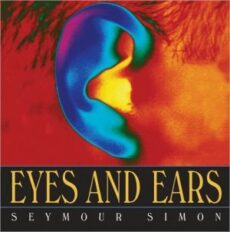
Informative content and full-color photos explain the complexities of seeing in an understandable way. The process by which the eyes receive light images and send nerve signals to the brain is described in clear, concise, and appealing text.
Arthur's Eyes: An Arthur Adventure
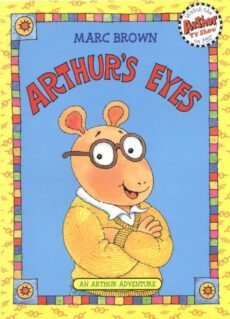
His friends tease Arthur when he gets glasses, but he soon learns to wear them with pride.
Eye: How It Works
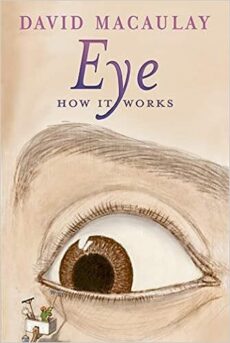
How can you tell that your shirt is on inside out? How do you see the soccer ball coming right at you? This high-interest text for newly independent readers discusses the way that the human eye works and how much we depend on the sense of sight.
Green Eyes, the Greenest Fields.
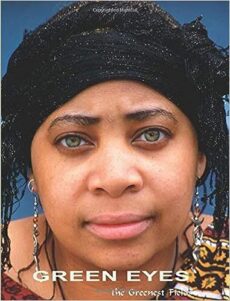
Photographs of people from around the world who have green eyes.
Eyeopeners! All About Animal Vision
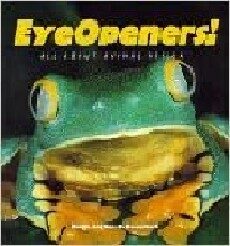
How do animals view each other and the world around them? How do they see? The book is organized by eye type, description, or kind of vision: “Compound Eyes,” “Antenna Eyes,” “Underwater Eyes,” etc. A wide variety of mammals, birds, reptiles, and other creatures are introduced. The brief text consists only of captions and includes just a few facts about the kind of vision these animals have. There is no explanation as to how these different types of eyes work. This profusely illustrated book includes lots of close-up photographs; each two-page chapter has a large, full-color photo facing three or four smaller shots of different animals. While there is not enough information for reports, this title will suffice for browsing. [Jacqueline Elsner, Athens Regional Library, GA.]
Supersense: Perception in the Animal World
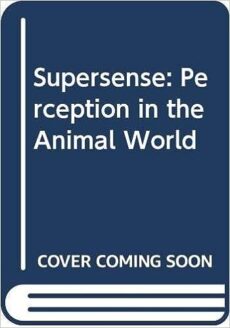
If you peered into “the hundred eyes of a scallop,” what would you see? What would it see? This heavily illustrated volume, companion to a BBC-TV series produced by wildlife photographer Downer, describes aspects of sight, sound, smell and time perception in animals. A focus on extremes engages the reader while introducing difficult concepts in an easy-to-understand manner. We learn of the similarities between piranha and goldfish — each is able to see much farther into the red-end of the spectrum than are humans; discover that a fly's high “flicker fusion frequency” would enable it, if watching a movie, to see scenes frame by frame; and contemplate the “sinister implications” of hunting sharks' attraction to vibrations of 200 hertz — the frequency produced by a hovering helicopter — while learning that areas of low magnetism correspond to sites of whale strandings. Dramatic, sometimes disconcerting, photographs close in on a dragonfly's eyes, focus on an Asian green pit viper and portray leaping impalas, hunting owls, lion cubs, elephants, bats, rats, grunion, alligators. And yes, honeybees can suffer jet-lag. [Publishers Weekly, 1989]
How Animals See Things
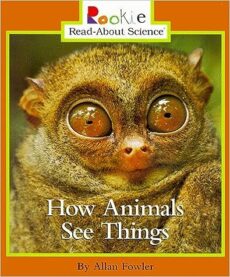
Briefly explains how different animals see. What is the difference between the eyes of a fly and a frog? Do a horse and a human see things the same way? Find out why different animals have different types of eyes, and why some animals have no eyes at all.
Whose Eyes Are These?: A Look at Animal Eyes - Big, Round, and Narrow
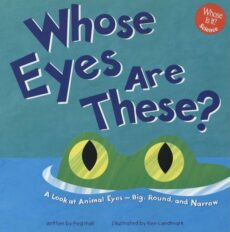
Examines a variety of animal eyes, noting how they look different and function in different ways. Animals shown include a zebra, a tiger, a housefly, a crocodile, a ghost crab, a snake, and an eagle.
Eye, Brain, and Vision (Scientific American Library)
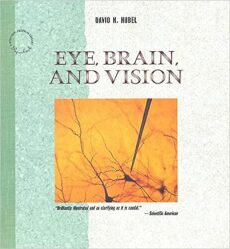
For over thirty years, Nobel Prize winner David H. Hubel has been at the forefront of research on questions of vision. In Eye, Brain, and Vision, he brings you to the edge of current knowledge about vision, and explores the tasks scientists face in deciphering the many remaining mysteries of vision and the workings of the human brain.
Six Dots: A Story of Young Louis Braille

Louis Braille was a young boy when he lost his sight. More than anything, he wanted to read. There were no books for him, so he invented his own alphabet that could be read by touch. The system he invented is still used today. Additional resources at the end of the book offer more information for parents and teachers.
Eyes (Animal Parts)
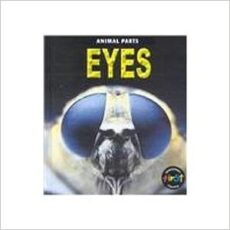
Learn how the eyes of various animals differ in size, placement, and function.
Light and Color in the Outdoors

In this classic book, the late Marcel Minnaert accompanies the reader on a tour of nature's light and color and reveals the myriad phenomena that may be observed outdoors with no more than a pair of sharp eyes and an inquiring mind.
The Brain and Nervous System
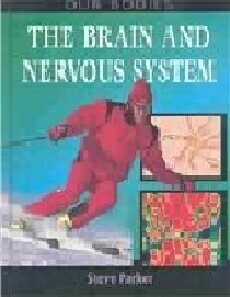
One of the revised human body series, this book examines the components, functions, and disorders of the nervous system. This attractive book dramatically meshes anatomical illustrations with photomicrography and colorful graphics that aid in the comprehension of the text. Information is conveyed through a straightforward overview and boxed inserts listing quickly distilled facts.
The Human Body (What if...)
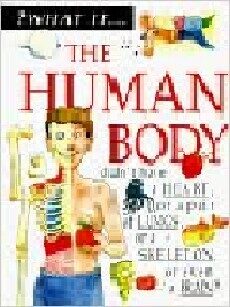
This book answers such questions as: What if we had no bones? What if we could hear like a bat? and, What if we had no eyes? Clever discussions and diagrams.
Animal Eyes

Part of the “Look Once, Look Again” series, this title introduces the variety of features that appear in the eyes of crabs, fish, frogs, starfish, cats, and geckos. In a guessing-game format, each right-hand page introduces a feature with a single sentence clue, and the back of the page gives several sentences more while a second photograph puts the feature in a larger context. Photographs are clean, clear, and well chosen. Extensive back matter includes a review identification quiz; a glossary of approximately fifteen words; activities which imply curriculum or adult supervision; a section on further study (with at least half the books recommended from this publisher), and an index. A good discussion starter for animal study. [Susan Hepler]
The Eye Book
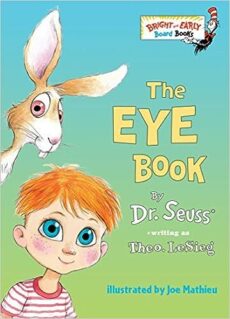
A boy and rabbit both have two eyes that see all kinds of things, from blue and red to a bird and a bed. The Eye Book is back and better than ever! A super-simple look at the marvelous things our eyes can see, this classic Bright & Early Book has a fresh new feel from veteran illustrator Joe Mathieu and an impressive new author credit: Dr. Seuss writing as Theo. LeSieg. So bright and colorful that kids and Seuss fans are in for a whopping eyeful!
What Do Animals See, Hear, Smell, and Feel?

Explores how animal senses are often superior to those of people.
